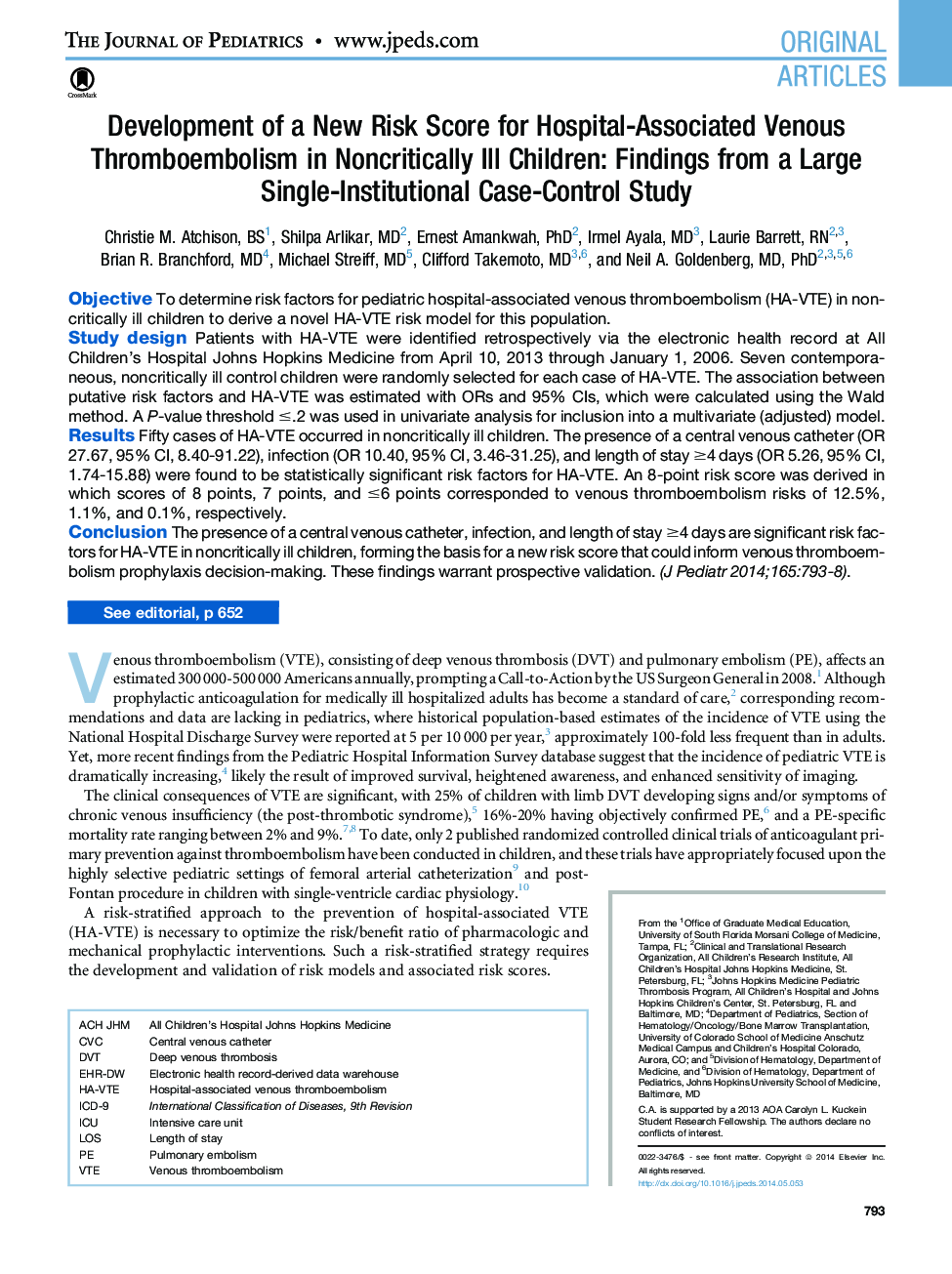| Article ID | Journal | Published Year | Pages | File Type |
|---|---|---|---|---|
| 4164954 | The Journal of Pediatrics | 2014 | 6 Pages |
ObjectiveTo determine risk factors for pediatric hospital-associated venous thromboembolism (HA-VTE) in noncritically ill children to derive a novel HA-VTE risk model for this population.Study designPatients with HA-VTE were identified retrospectively via the electronic health record at All Children's Hospital Johns Hopkins Medicine from April 10, 2013 through January 1, 2006. Seven contemporaneous, noncritically ill control children were randomly selected for each case of HA-VTE. The association between putative risk factors and HA-VTE was estimated with ORs and 95% CIs, which were calculated using the Wald method. A P-value threshold ≤.2 was used in univariate analysis for inclusion into a multivariate (adjusted) model.ResultsFifty cases of HA-VTE occurred in noncritically ill children. The presence of a central venous catheter (OR 27.67, 95% CI, 8.40-91.22), infection (OR 10.40, 95% CI, 3.46-31.25), and length of stay ≥4 days (OR 5.26, 95% CI, 1.74-15.88) were found to be statistically significant risk factors for HA-VTE. An 8-point risk score was derived in which scores of 8 points, 7 points, and ≤6 points corresponded to venous thromboembolism risks of 12.5%, 1.1%, and 0.1%, respectively.ConclusionThe presence of a central venous catheter, infection, and length of stay ≥4 days are significant risk factors for HA-VTE in noncritically ill children, forming the basis for a new risk score that could inform venous thromboembolism prophylaxis decision-making. These findings warrant prospective validation.
